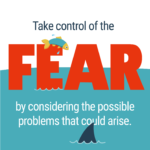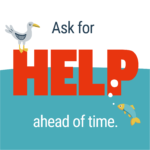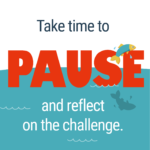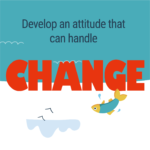Fear is one of those freakishly powerful four-letter words that can hold us back.
Whether it’s a fear of change, judgement or failure, fear can stop us from exploring the unfamiliar and taking risks.
What if we could flip fear on its head and use it to be courageous, solve complex challenges, and make decisions with the mindset that, if things go wrong at least it’ll be a learning curve.
In his book Make Change Work for You, Scott Steinberg does exactly that.
Let’s take a look at his four steps to facing the FEAR, and taking risks with a clear mind and a futureproof plan…
Focus
When working on a new project or challenge, take control of the fear by considering the possible problems that could arise.
Ask yourself: How threatening is this potential problem? Does anyone on your team have experience with responding to this kind of problem and communicating it to others?
Engage
It’s time to develop an action plan to help manage the risks. Decide what resources you’ll need and what steps must be taken to solve the problem.
Ask yourself: Who and what do you need and by when? Whether it’s more hands on deck, support from your comms network or a new channel – ask for help ahead of time.
Assess
Take the time to pause and reflect on the challenge. Turn fear into a learning tool, a way of assessing the possible outcomes of your focus and engagement phases.
Ask yourself: Is this challenge an opportunity to learn, grow and expand your capabilities? What mistakes have been made and what can you alter or change to make your strategy better?
React
Don’t ignore the weaknesses or inconsistencies in your plan. Now’s the time to address them, be flexible and adjust course when necessary. It’s all about developing an attitude that can handle change.
Ask yourself: Are you reacting in a rational, well thought out way? Are you willing to take actions that are outside of your comfort zone? Have you asked a trusted comms colleague to give you honest and frank feedback? If not, why?
Each step in Scott Steinberg’s FEAR method work in tandem because without focusing, engaging and assessing the problem, your reaction may not be as effective or productive.
To keep up with the ever-changing world around us, we must be courageous, welcome change and take well-evaluated risks.
But to be courageous isn’t to be fearless – it’s about using fear to your advantage and subverting the power it has over you by taking small, calculated risks.
“Willpower, i.e, the force behind courage, is like a muscle – when you exercise your willpower you strengthen it, and thus increase your tolerance for risks.” – Scott Steinberg
















